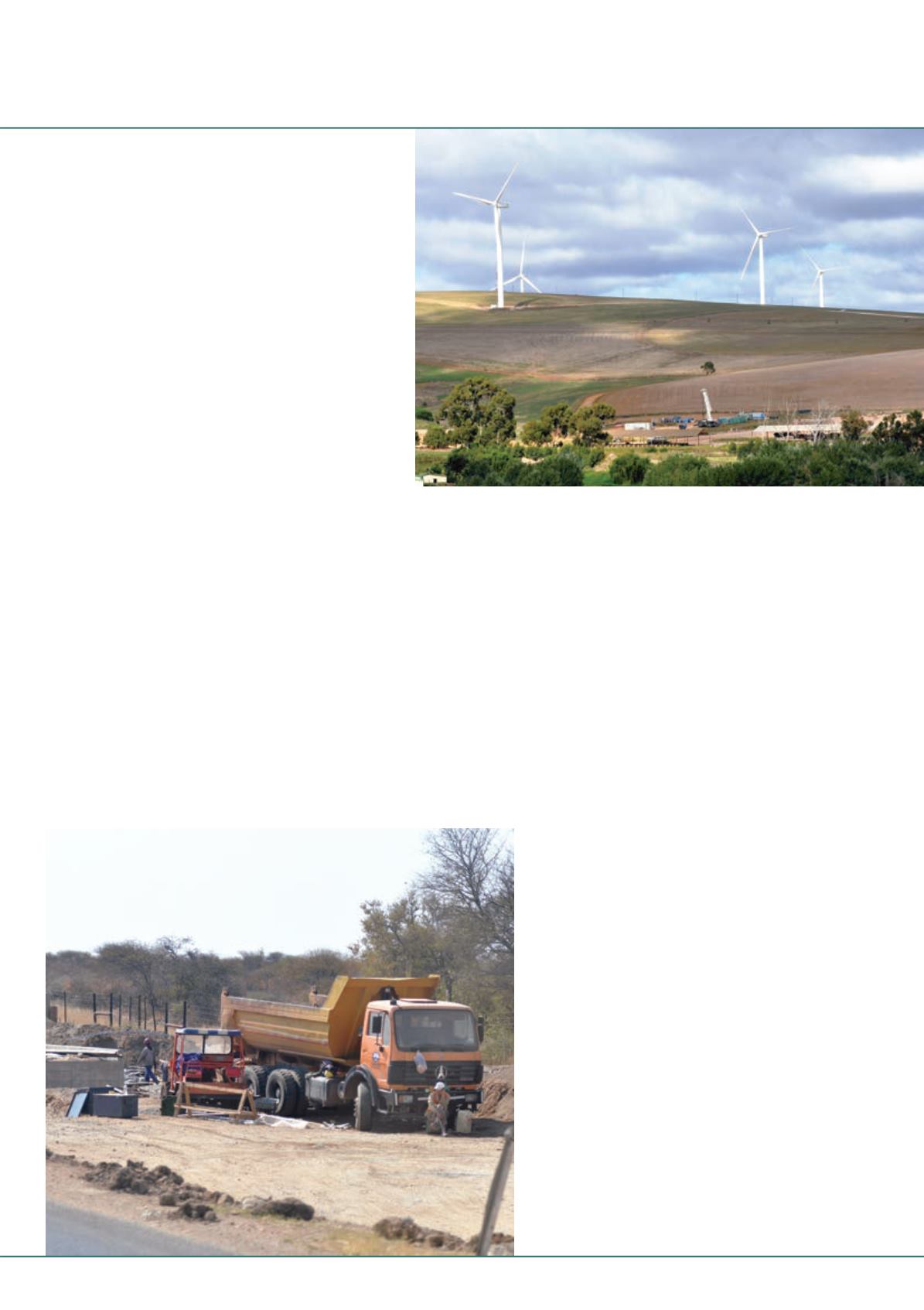
31
july-august 2014
international
construction
REGIONAL REPORT
South African hope
African Forum of Civil Engineering Contractors, the weather
led to daily losses of between ZAR 50 million (US$ 5 million)
and ZAR 100 million (US$ 10 million), with the provinces of
Limpopo, Gauteng, North West, Mpumalanga, KwaZulu Natal
and parts of the Free State being the worst affected areas.
More broadly the construction sector has watched as one of
its main private sector clients, the mining industry, has had to
contend with troubles of its own.
Labour unrest, including the longest mining strike in the
country’s history, and the global slowdown in demand for
commodities has hit miners hard.
“It’s a bad picture, and not many mining CEOs are brave
enough to be laying down new projects,” said PeterMajor, mining
consultant at Cadiz Corporate Solutions in Johannesburg.
“People are talking of shutting mines not building them.”
An example of this is Aquarius Platinum’s cancellation of a
ZAR 7.5 billion (US$ 700 million) order to Murray & Roberts,
negatively impacting the order book. The reassessment of capital
projects by mining companies is also bound to influence future
demand.
Areas of optimism
Given the sorry picture it would be understandable if
construction executives took extended gardening leave. There
are however areas of optimism.
Regionally and beyond into sub-Saharan Africa opportunities
are becoming available, thanks to large-scale investment in
energy, mining and infrastructure.
Hatch Goba for instance says it is actively researching all the
projects currently under way in Africa and, to date, has identified
more than 900 projects in the mining and infrastructure sectors.
Murray & Roberts is another company with its sites aimed
northwards. Already well-established in the Middle East and
Australia, the group is now conducting a study to evaluate
the mining potential in countries outside South Africa to
understand the risks, logistical constraints and potential clients.
It has already opened offices in West Africa and one in Zambia.
They won’t have the field to themselves. Fierce Chinese
A desperate
shortage of energy
has resulted in
new generation
projects including
renewables,
which will be
one of the few
growth sectors
for South Africa’s
construction firms
competition that often comes tied to alluring finance packages
make it difficult for the South Africans to win out government
issued tenders in their own back yard.
Recently Stefanutti Stocks said it had scaled down its operations
in Botswana because its order book in that country has been
dented by intense competition from Chinese contractors. Some
relief from Chinese competition may be in sight though.
Last year Botswana fired Sinohydro, the primary contractor on
the capital Gaborone's Sir Seretse Khama International Airport
Expansion Project Phase 2. It also ditched the China National
Electric Equipment Corporation (CNEEC) after it repeatedly
missed deadlines upgrading the Morupule coal power plant.
German company STEAG Energy Services has now been given
the job.
In April the governments of Namibia and Botswana said the
two would commence a long cherished project to build a 900
mile (1,450 km) rail line, the Trans-Kalahari. The line will link
landlocked Botswana to the port of Walvis Bay on Namibia’s
Atlantic coastline – ideally placed to export to Europe.
The route will cost an estimated US$ 10 billion to build
making it one of the largest civil construction projects either
nation has ever contemplated.
“Such a project often depends on a major sponsor, or group
of sponsors, with a strong balance sheet and who has a large
commitment in the Botswana coal fields,” said Alan Sproule,
director of project finance, advisory and infrastructure finance at
Standard Chartered merchant bank. “This sponsor would need
to drive the development of the rail network and be prepared to
develop much of this at risk as a debt solution can take a long
time to put together.”
Another tantalising prospect is Mozambique, which enjoys
one of the world’s fastest growing economies as a result of its
vast coal and gas reserves. Development of its resources is still in
the early stage and is hampered by a lack of rail, port and power
infrastructure. This is slowly being addressed.
The Nacala Rail corridor is a significant advance that will span
584 km and link Vale’s Moatize coal mine with the export Port
of Nacala, located in the north-east of Mozambique. Other rail
links are expected to follow.
Civil construction in countries around South
Africa is increasing to take advantage of
investment in resource investment
>


